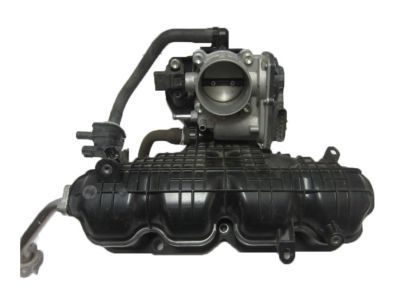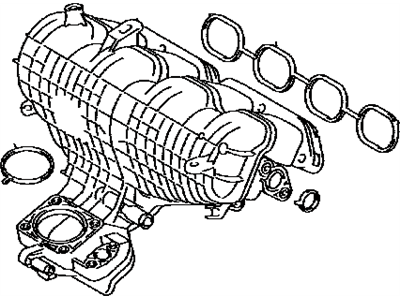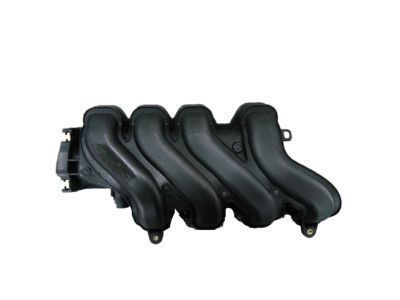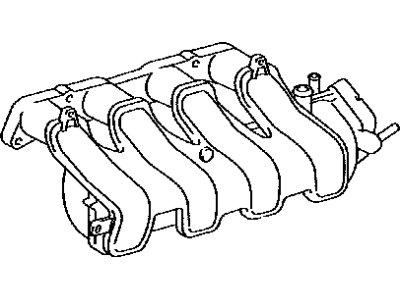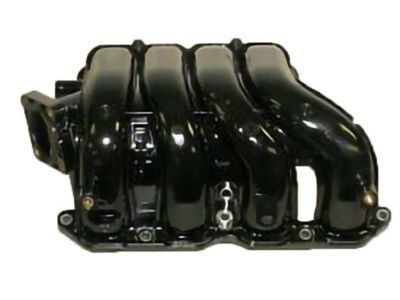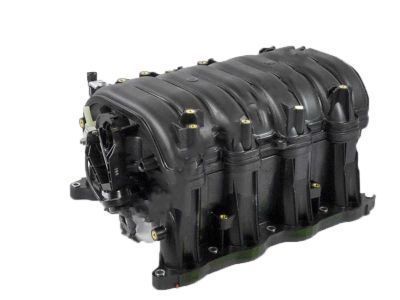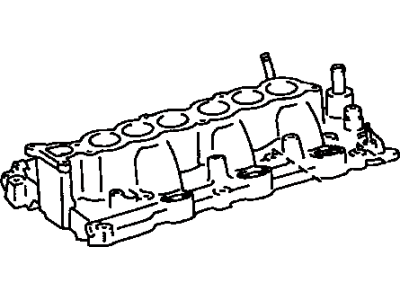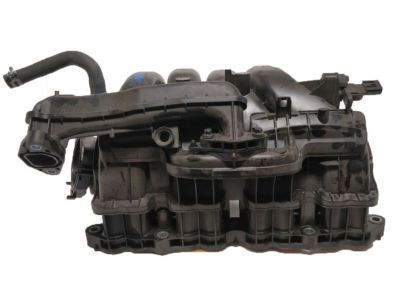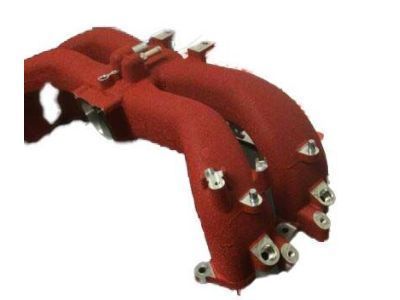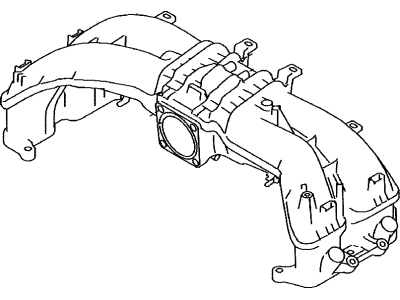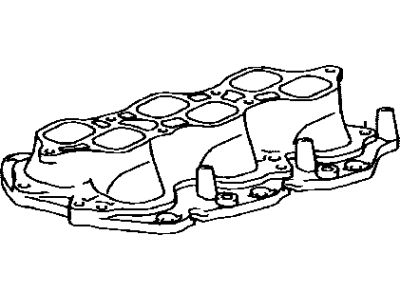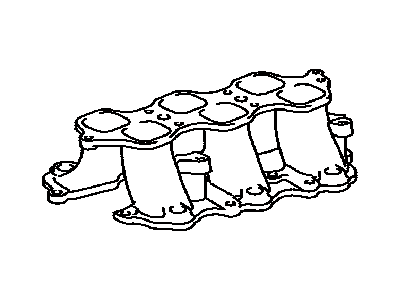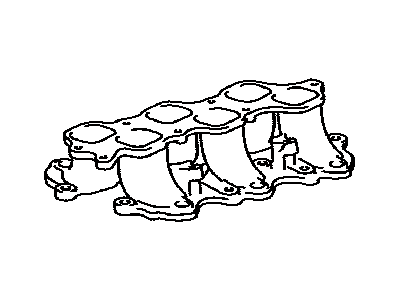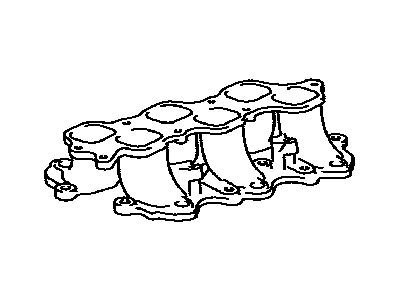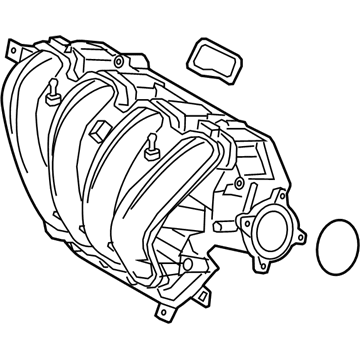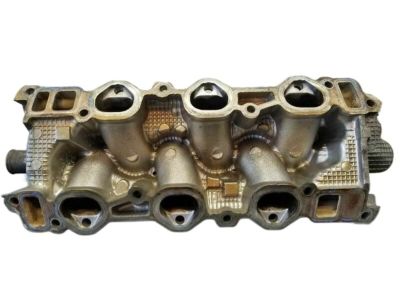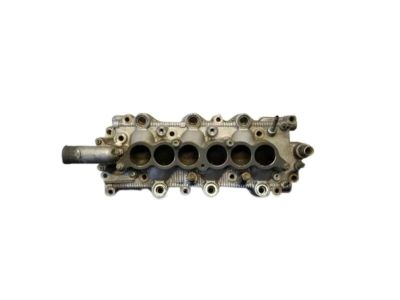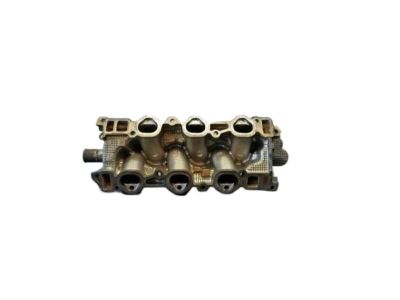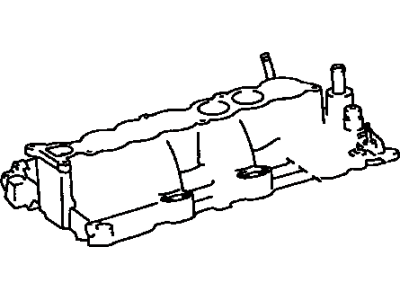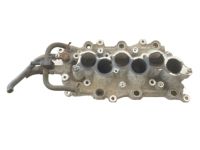

My Garage
My Account
Cart
Genuine Toyota Intake Manifold
Engine Intake Manifold- Select Vehicle by Model
- Select Vehicle by VIN
Select Vehicle by Model
orMake
Model
Year
Select Vehicle by VIN
For the most accurate results, select vehicle by your VIN (Vehicle Identification Number).
226 Intake Manifolds found
Toyota Manifold Assembly, INTAK
Part Number: 17120-37054$232.45 MSRP: $333.32You Save: $100.87 (31%)Ships in 1-3 Business DaysProduct Specifications- Other Name: Manifold, Intake; Intake Manifold
- Manufacturer Note: *119
- Replaces: 17120-37051, 17120-37053, 17120-37052, 17120-37050
Toyota Intake Manifold
Part Number: 17101-21080$134.77 MSRP: $191.61You Save: $56.84 (30%)Ships in 1-3 Business DaysProduct Specifications- Other Name: Manifold, Intake; Intake Manifold
Toyota Manifold Assembly, INTAK
Part Number: 17120-37052$232.45 MSRP: $333.32You Save: $100.87 (31%)Ships in 1-3 Business DaysProduct Specifications- Other Name: Manifold, Intake
- Replaced by: 17120-37054
Toyota Intake Manifold
Part Number: 17120-50020$1226.39 MSRP: $1831.17You Save: $604.78 (34%)Ships in 1-3 Business DaysProduct Specifications- Other Name: Manifold, Intake; Intake Manifold
- Replaces: 17120-50010, 17120-50011
Toyota Manifold Assembly, INTAK
Part Number: 17120-24010$268.41 MSRP: $384.89You Save: $116.48 (31%)Product Specifications- Replaced by: 17120-F2010
- Product Specifications
- Other Name: Manifold, Intake; Intake Manifold
Toyota Manifold Assembly, INTAK
Part Number: 17120-F0020$365.93 MSRP: $545.89You Save: $179.96 (33%)Ships in 1-2 Business DaysProduct Specifications- Other Name: Intake Manifold
- Replaces: 17120-25020
Toyota Manifold Assembly, INTAK
Part Number: 17120-0T012$220.62 MSRP: $316.35You Save: $95.73 (31%)Ships in 1-2 Business DaysProduct Specifications- Other Name: Manifold, Intake; Intake Manifold
- Replaces: 17120-37022
Toyota Manifold Assembly, INTAK
Part Number: 17120-25010$365.93 MSRP: $545.89You Save: $179.96 (33%)Ships in 1-3 Business DaysProduct Specifications- Replaced by: 17120-F0060
Toyota Manifold Assembly, INTAK
Part Number: 17120-38031$1500.66 MSRP: $2240.69You Save: $740.03 (34%)Ships in 1-3 Business DaysProduct Specifications- Other Name: Manifold, Intake
- Replaced by: 17120-38033
Toyota Manifold Assembly INTAK
Part Number: 17120-F0060$365.93 MSRP: $545.89You Save: $179.96 (33%)Ships in 1-3 Business DaysProduct Specifications- Other Name: Intake Manifold
- Manufacturer Note: *628
- Replaces: 17120-25010, 17120-F0010
Toyota Manifold Assembly, INTAK
Part Number: 17120-37110$232.45 MSRP: $333.32You Save: $100.87 (31%)Ships in 1-3 Business DaysProduct Specifications- Other Name: Manifold, Intake; Intake Manifold
Toyota Manifold Assembly, INTAK
Part Number: 17120-0V010$644.16 MSRP: $961.81You Save: $317.65 (34%)Ships in 1-3 Business DaysProduct Specifications- Other Name: Manifold, Intake; Intake Manifold
Toyota Manifold Assembly, INTAK
Part Number: 17120-0V040$722.66 MSRP: $1079.04You Save: $356.38 (34%)Ships in 1-3 Business DaysProduct Specifications- Other Name: Manifold, Intake; Intake Manifold
- Manufacturer Note: *212
Toyota Manifold Assembly, INTAK
Part Number: 17120-36010$761.74 MSRP: $1137.39You Save: $375.65 (34%)Ships in 1-3 Business DaysProduct Specifications- Other Name: Manifold, Intake
- Replaced by: 17120-36011
Toyota Manifold Assembly, INTAK
Part Number: 17120-F2010$268.41 MSRP: $384.89You Save: $116.48 (31%)Product Specifications- Other Name: Intake Manifold
- Manufacturer Note: *702
- Replaces: 17120-24010
Toyota Intake Manifold
Part Number: 17120-0D040$359.58 MSRP: $536.42You Save: $176.84 (33%)Ships in 1-3 Business DaysProduct Specifications- Other Name: Manifold, Intake; Intake Manifold
- Manufacturer Note: (L)
- Replaces: 17120-22030
Toyota Intake Manifold
Part Number: 17120-22030$359.58 MSRP: $536.42You Save: $176.84 (33%)Ships in 1-3 Business DaysProduct Specifications- Other Name: Manifold, Intake
- Manufacturer Note: (J)
- Replaced by: 17120-0D040
Toyota Manifold Assembly, INTAK
Part Number: 17120-WB002$275.67 MSRP: $395.30You Save: $119.63 (31%)Ships in 1-3 Business DaysProduct Specifications- Other Name: Intake Manifold
- Product Specifications
- Other Name: Intake Manifold
| Page 1 of 12 |Next >
1-20 of 226 Results
Toyota Intake Manifold Parts Questions & Experts Answers
- Q: How to remove and install the upper and lower intake manifolds in V8 engine on 2003 through 2009 Toyota 4Runner?A:To remove the lower intake manifold, first relieve the fuel system pressure. Disconnect the cable from the negative battery terminal and remove the throttle body. Clearly label and detach all remaining wires, hoses, and brackets attached to the upper intake manifold. Remove the mounting bolt for the EVAP vacuum switching valve and separate it from the upper intake manifold. Evenly loosen the intake manifold fasteners, making several passes to avoid warping, then remove the mounting nuts and bolts to detach the upper intake manifold from the lower intake manifold, taking care not to pry between the gasket mating surfaces if it is stuck. When removing the upper intake manifold, note that it can remain attached to the lower manifold if access to other components is needed, while the throttle body can also stay attached if the coolant hoses are clamped off and disconnected. Next, remove the fuel rail and injectors, then label and detach all remaining wires, hoses, and brackets attached to the lower intake manifold, coolant outlets, and rear coolant bypass casting. Remove the mounting nuts and bolts to detach the intake manifold from the cylinder heads, starting with the outer bolts and working inward, ensuring even separation to avoid damage. For installation, remove all traces of old gasket material and sealant from the upper and lower intake manifolds and cylinder heads, cleaning the mating surfaces with brake system cleaner while plugging the cylinder head ports with rags. Install new gaskets, position the lower intake manifold on the engine, and install the fasteners, tightening them in three or four equal steps from the center outwards to avoid warping. Install a new gasket and the upper intake manifold onto the lower intake manifold, then install and tighten the nuts and bolts in the same manner. Finally, install the remaining parts in reverse order of removal, check the coolant level, and run the engine to check for fuel, vacuum, and coolant leaks around the throttle body hoses.
- Q: How to remove and install Intake Manifold in 3.5L V6 engine on Toyota Highlander?A:The upper intake manifold, referred to by Toyota as the intake air surge tank, requires the disconnection of the negative battery terminal, with a warning for 2GR-FKS engines to relieve fuel system pressure beforehand. After removing the engine cover, all hoses and wiring from the throttle body should be disconnected, with coolant hoses pinched off to prevent draining the cooling system and labeled for clarity. The windshield wiper arms, motor, side seals, and plastic cowl must be removed, followed by the throttle body bracket, upper intake manifold brace, and throttle body. Disconnect all wiring and hoses from the upper intake manifold, then remove the mounting fasteners and the manifold itself, checking the gasket for damage and replacing it if necessary. Installation follows the reverse order, ensuring the mounting bolts and nuts are tightened to the specified torque in a circular pattern starting from the inner bolts. For the lower intake manifold, known as the intake manifold, first remove the upper intake manifold. If replacing the lower intake manifold, the fuel rail should be removed, although for 2GR-FE engines, it may not be necessary unless disconnecting fuel supply and return lines. On 2GR-FKS engines, the upper fuel rail must be removed before the lower intake manifold. After removing the interfering brace and engine mount brackets, unscrew the bolts to take off the lower intake manifold, discarding old gaskets and cleaning the mating surfaces thoroughly. Installation is again the reverse of removal, using new gaskets and tightening the bolts in a criss-cross pattern from the center outward to the specified torque.
- Q: How to remove and install the upper and lower intake manifolds in V6 engine on 2005 through 2009 Toyota Tacoma?A:To replace the upper intake manifold, start by disconnecting the cable from the negative terminal of the battery, then remove the engine cover, air intake duct, and air filter housing. Next, clamp off and disconnect the coolant hoses from the throttle body, followed by disconnecting the EVAP system fuel vapor feed hose, ventilation hose, and throttle body wiring. Disconnect the two Vacuum Switching Valve electrical connectors, remove the throttle body bracket bolts and the bracket, then take off the baffle plate. Remove the bolts from each intake manifold support bracket and the upper intake manifold mounting nuts and bolts, checking the condition of the upper intake manifold gasket for reuse if it is not damaged. For the lower intake manifold, first remove the upper intake manifold, then if replacing the lower intake manifold, remove the fuel rail; if only replacing gaskets, disconnect the fuel supply and return line connections. Remove the lower intake manifold bolts and the manifold itself, discarding old gaskets and cleaning the mating surfaces thoroughly. Installation is the reverse of removal, ensuring new gaskets are used and tightening the bolts in a criss-cross pattern to the specified torque.
Related Toyota Parts
Browse by Model
4Runner Intake Manifold 86 Intake Manifold Avalon Intake Manifold C-HR Intake Manifold Camry Intake Manifold Celica Intake Manifold Corolla Cross Intake Manifold Corolla Intake Manifold Corolla iM Intake Manifold Corona Intake Manifold Cressida Intake Manifold Crown Intake Manifold Echo Intake Manifold FJ Cruiser Intake Manifold GR Corolla Intake Manifold GR Supra Intake Manifold GR86 Intake Manifold Grand Highlander Intake Manifold Highlander Intake Manifold Land Cruiser Intake Manifold MR2 Intake Manifold MR2 Spyder Intake Manifold Matrix Intake Manifold Paseo Intake Manifold Pickup Intake Manifold Previa Intake Manifold Prius AWD-e Intake Manifold Prius C Intake Manifold Prius Intake Manifold Prius Prime Intake Manifold Prius V Intake Manifold RAV4 Intake Manifold RAV4 Prime Intake Manifold Sequoia Intake Manifold Sienna Intake Manifold Solara Intake Manifold Supra Intake Manifold T100 Intake Manifold Tacoma Intake Manifold Tercel Intake Manifold Tundra Intake Manifold Van Intake Manifold Venza Intake Manifold Yaris Intake Manifold Yaris iA Intake Manifold
